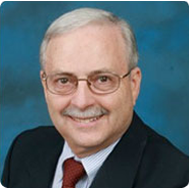AADSM Treatment Protocol:
Oral Appliance Therapy for Sleep Disordered Breathing
- Medical Assessment 1, 2, 3, 11
Either;
- In order to practice within the limits of their license as designated by their state the dentist refers the patient to the physician for diagnosis of SDB – be it snoring, UARS or Obstructive Sleep Apnea. Following diagnosis, the physician sends the patient back to the dentist for OAT as appropriate.
Or;
- Referral by Physician for oral appliance therapy if appropriate. - A copy of the diagnostic sleep study is forwarded to the dentist.
- The dentist is to assess the patient through a complete clinical examination, including determining the current health and prognosis of oral tissues that might be affected by the use of a mandibular advancement appliance. Evaluation of a recent radiographic survey when indicated is important to a complete examination. The dentist is to recommend the choice of appliance 4,5,6,7,8,9,10 and disclose relevant fees. Rationale for appliance therapy should be explained to the patient and documented.
- Communicate your proposed treatment plan, progress and follow up notes, as well as other pertinent information, with the patient’s physician and appropriate healthcare providers on a regular basis.
- Informed consent must be obtained prior to appliance delivery.
- Dentist to initiate therapy and titrate 9, 11 the OA to achieve optimum results based on resolution of patient symptoms and / or obtaining objective data during titration with the use of portable monitors.
- Following optimal titration9, 11, the dentist refers the patient back to the physician for assessment of OA treatment of SDB. If the OA treatment is sub-therapeutic, the dentist consults with the physician to discuss further treatment options.
- Patients diagnosed with primary snoring may be treated without follow-up objective data.
- Follow-up protocol should include a patient evaluation at six months after successful titration and at least annually thereafter. The annual recall exam should evaluate efficacy, patient compliance, side effects, symptoms as well as the structural integrity of the oral appliance and the need for possible additional titration. Continual annual assessment and the need for possible additional titration is communicated with the patient’s physician.
- Knowledge of various appliances is strongly recommended, as no one appliance is effective for treatment of all patients. Dentists who treat SDB are encouraged and have a responsibility to pursue additional education in the field.

